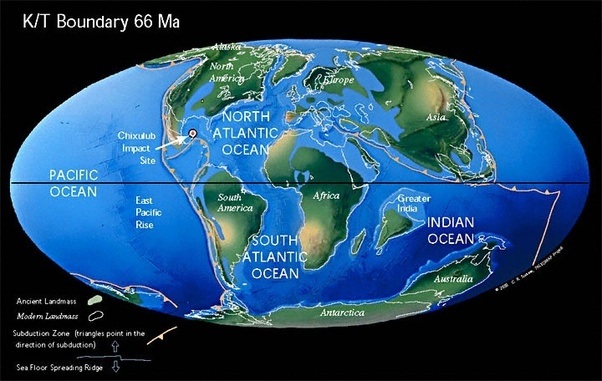Walter Alvarez
A Most Improbable Journey
A Big History of Our Planet and Ourselves
Multco St Johns, 550 A4739m 2016
Big History is traditional human history expanded into evolution, paleontology, and cosmology.
- Chapter 1, Arroyo el Minbral in Yucatan with Sandro Montanari, Jan Smit and Nicola Swinburne, discovering a 1 to 3 meter thick layer of sand enclosed by the K-T boundary, evidence of a huge nearby tsunami.
|
The impact zone was shallow ocean. Would a different impact longitude (onto land, or into deeper oceans) cause different results? Follow the impact latitude east or west, and imagine... |
- Chapter 9, p169-176. Bronze (the first hard tool metal) requires tin and copper, plus charcoal for reduction. Copper was mined at from high grade (2%) ore at Skouriotissa on Cypress, a geological unit of deep sea floor pushed above the sea. Tin came from continental mountains in Anatolia, 50 sea miles away but geologically very different. Fast growing trees (to make charcoal) grew on mountain upslopes on Cycpress. Without all three, no bronze age, no subsequent iron age, no western civilization?
- China's use of bronze was somewhat later, and archeologists argue whether bronze metallurgy arrived from the West or emerged independently. Independent discovery might require similar proximity of dissimilar ore.
The book reminds us of the contingent nature of our existence. Tiny chances times 10²³ stars? Assuming some very old technological civilizations expand to fill their stellar neighborhoods, that suggests the "tiny chances" of civilization per star range from 1 in 10²³ to perhaps 1 in a thousand. We do not have nearly enough data to narrow that range, and philosophical attempts to bypass our ignorance are ignorance on stilts.

